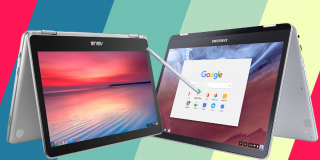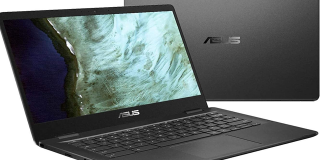How to Turn Closed Captioning On or Off on Chromebook

Although primarily intended for the hearing-impaired, closed captions have essentially become synonymous with regular subtitles. There are plenty of reasons why people prefer to use them while watching their favorite programs. But what if you want to do so when using a Chromebook?
You may know that Chromebook tablets have always been something of a challenge for effective personal use. Even simple tasks like loading a subtitle can be a problem, but it’s not impossible. Here’s how to turn closed captioning on/off on Chromebook.
Chromebook
First of all, the integrated Chrome OS is Linux-based, which can make things complicated. Where Windows and macOS are both made with user experience in mind (which comes with its own set of limitations), the Chrome OS is a strange beast to tame. Seemingly simple tasks like turning closed captions on and off could become tedious and confusing.
On the other hand, Chromebooks are widely used in schools nowadays, and sometimes, adding closed captioning on Chromebook is necessary for educational purposes. It can give you more experience with the Chrome OS and, simultaneously, with Linux in general.

Activating Closed Captions on Chromebook
Chromebook comes with its default media player, but this player doesn’t support subtitle files, at least not directly. Unless you are a proficient coder, you won’t be able to get the default player on Chromebook to use captions in your video. This means that you’re going to have to go for third-party solutions.
There are many free media players available on the Chrome Web Store and this is where you should start your search. Note that the following player is not the only media app that can help you use subtitles on Chromebook, but it’s one that was primarily designed for this, which is apparent from its title.
Subtitle Videoplayer
Subtitle Videoplayer is a basic HTML5 media app for Chrome and Chrome OS. It doesn’t bring anything too fancy to the table, just simple functions like video seeking, volume control, and fullscreen mode. However, it does work offline, which is not something you’ll easily find on Chrome Web Store.
Subtitles
Subtitle Videoplayer doesn’t just allow the user to load .srt subtitle files. You can also use it to auto-download matching subtitles through OpenSubtitles.org, as you would on any other popular video player. You can also set encoding, adjust the font size, and, most importantly, adjust the delay. These features can be seen on the app’s main interface. It is simple and easy to use.
One downside of this app is that .srt is the only subtitle format it supports.
Loading a Subtitle
Open the video in the Subtitle Videoplayer app by clicking the up-facing arrow in the bottom left corner and open a file from the dialog box. Alternatively, simply drag and drop a video file into the app window. Navigate to the Closed Caption (CC) icon in the toolbar and use the file picker, or just drag & drop the desired .srt file into the app window.
If you don’t have the subtitles yet, the best way to go is to use the auto-download feature. To do this, navigate to the Closed Caption (CC) again, click it and simply select the language/subtitle/closed caption that you need. All auto-downloaded subtitles and closed captions are from OpenSubtitles.org. The process is very simple. It’s similar to any online streaming player, only without the endless ads – and again, you can use this offline.
Turning a Subtitle Off
Turning a closed caption or subtitle off in Subtitle Videoplayer is as basic as clicking the No subtitle option in the Closed Caption (CC) section.
Closed Captioning or Subtitles?
You should note that subtitles and closed captioning aren’t the same thing. Where subtitles are focused translations of spoken and written language that appears on the screen, closed captions are transcriptions that try to focus on and encompass everything important that happens.
Closed captions transcribe a variety of sounds and effects. For instance, they will often feature descriptions like “[ominous music]”, “[labored breathing]”, or “[inaudible dialog]”. Closed captions may be primarily for those with hearing damage, but they are also used in environments where you need to turn down the volume but don’t want to miss out on anything that’s happening on the screen.

Chromebook and Closed Captioning
Evidently, Chromebook isn’t made with user-friendliness in mind, although it does use a very simple OS. Subtitle Videoplayer might not be the fanciest media playback tool out there, but it definitely does the job when it comes to .srt files. The fact that it is completely free on Chrome Web Store is another plus.
Do you use closed captioning on your Chromebook? Which video players do you use? Have you found another workaround? Feel free to share your story in the comments.















